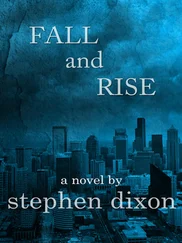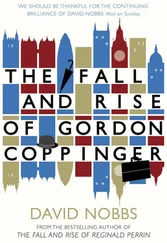“My recommendation,” Nasypany told his team, “if we have to take anybody out, large aircraft, we use AIM-9s in the face.”
The AIM-9 is a short-range, air-to-air missile known as the Sidewinder, with a twenty-pound warhead and an infrared guidance system that locks onto its target. Each fully armed F-16 fighter carried six of them, while each F-15 carried two Sidewinders and two larger missiles called Sparrows.
Nasypany made the comment with the professional air of a military airman who might receive a wrenching command. Then he paused a moment, as though unsettled, and added more obliquely, “If need be …”
The potential need to shoot down a commercial airliner filled with innocent men, women, and children remained unresolved. A short time later, a female NEADS staffer said to no one in particular: “Oh God, they better call the president.”
Another staffer said: “Believe me, he knows.”
In fact, President George W. Bush had learned about the World Trade Center crashes only minutes earlier, and no discussions had yet taken place about what action the military should take if more terrorists turned passenger jets into weapons of mass destruction.
Still, at NEADS they wanted to be ready. On Nasypany’s orders, Otis F-15 fighter pilots Duffy and Nash left their holding pattern and established a CAP, or Combat Air Patrol, over Manhattan. A staffer from NEADS radioed Duffy to ask if he’d have a problem with an order to shoot down a hijacked passenger jet. Having seen the destruction already caused by suicide hijackers, Duffy answered flatly: “No.”
Nash looked down from his cramped cockpit at the burning towers. Thick black smoke spiraled upward to space. Nash thought: “That was the start of World War III.”
If Nash was correct, the next battle had already begun, and the battlefield would be Washington, D.C.
THE SKIES WERE blue, the air was smooth, and all was normal during the first half hour of American Flight 77’s voyage west.
Shortly after the flight took off from Dulles, before the hijackings of Flight 11 or Flight 175 were known beyond a tiny circle of people, an FAA flight controller at the Washington Center, Danielle O’Brien, made a routine handoff of Flight 77 to a colleague at the FAA’s Indianapolis Center. For reasons she couldn’t explain and would never fully understand, O’Brien didn’t use one of her normal sendoffs to the pilots: “Good day,” or “Have a nice flight.” Instead she told them, “Good luck.”
Indianapolis Center air traffic controllers managed separation in the airspace over 73,000 square miles of the Midwest, including parts of Kentucky, Illinois, Indiana, Ohio, Tennessee, Virginia, and West Virginia. When initially under the control of Indianapolis Center, Flight 77’s pilots climbed, as instructed, to 35,000 feet and turned right 10 degrees. At just before 8:51 a.m., five minutes after the crash of Flight 11, the pilots acknowledged routine navigational instructions from Indianapolis controller Chuck Thomas, an eleven-year FAA veteran who tracked the flight along with fourteen other planes in his sector.
Focused on their work, neither Thomas nor the other controllers in Indianapolis Center had seen television reports about the crash of American Flight 11. They also had no knowledge of the then ongoing crisis aboard United Flight 175.
From the perspective of Chuck Thomas and other controllers in Indianapolis Center, all of them unaware of the emerging pattern of suicide hijackings, American Flight 77 began behaving in strange and unexpected ways starting at 8:54 a.m. First, the plane made an unauthorized turn to the southwest. Three minutes later, someone turned off its transponder and the plane disappeared from Thomas’s radar screen.
Concerned, but with no reason to fear the worst, Thomas searched for Flight 77 on his screen along its projected flight path to the west and to the southwest, the direction in which he had seen it turn. Nothing.
“American Seventy-Seven, Indy,” Thomas called over the radio. He tried five more times over the next two minutes, starting at 8:56 a.m. No reply.
Thomas called American Airlines for help in contacting Flight 77 pilots Chic Burlingame and David Charlebois in the cockpit, but the airline’s dispatchers also couldn’t reach them by radio. Airline officials sent a text message to the cockpit instructing the pilots to contact Indianapolis Center air traffic controllers. That went unanswered, too.
Thomas and other controllers spread word throughout Indianapolis Center that they had lost contact with Flight 77. As a precaution, they agreed to “sterilize the airspace,” moving other planes out of the way of Flight 77’s projected westerly path. But its failure to respond and the loss of its transponder signal made the controllers doubt the plane was still airborne. Still in the dark about what had happened in New York, they suspected that Flight 77 had experienced a catastrophic electrical or mechanical failure and that the plane had crashed. Controllers tried to call the flight for several more minutes but heard only silence. They made a final radio call to Flight 77 at shortly after 9:03 a.m.—coincidentally, at almost the exact moment United Flight 175 hit the South Tower.
Meanwhile, a conference call about the hijackings of American Flight 11 and United Flight 175 among air traffic controllers in the Boston, New York, and Cleveland centers didn’t include Indianapolis Center. The reason was at once straightforward and tragically wrongheaded: no one thought a hijacked plane was headed that way, so the FAA didn’t want to distract them from their work.
At 9:08 a.m., more than twenty minutes after American Flight 11 had hit the North Tower, Indianapolis controllers remained unable to find Flight 77 on radar or raise the cockpit by radio. They called the West Virginia State Police, Air Force Search and Rescue in Langley, Virginia, and the FAA’s Great Lakes Regional Office to alert them to the possible crash of Flight 77. They considered a downed plane the most likely outcome; in an information vacuum about the other incidents, nothing of what the Indianapolis controllers saw fitted their expectations or training about a “traditional” hijacking.
But in fact, American Flight 77 was still airborne.
Someone in the cockpit had made a hairpin turn over Ohio. As a result, Indianapolis air traffic controllers were looking for the plane in exactly the wrong direction. While they searched to the west and southwest, because that’s where the plane had been heading, Flight 77 now pointed east.
Its autopilot was set for a new course: to Reagan National Airport, in the heart of Washington, D.C.
CHAPTER 7
“BEWARE ANY COCKPIT INTRUSION”
United Airlines Flight 93
UNITED AIRLINES FLIGHT ATTENDANT CEECEE LYLES’S CELLPHONE rang before 5 a.m. as she slept on the futon in her crash pad apartment in Newark, New Jersey. Only a few hours had passed since she fell asleep midconversation with her husband, Lorne. Now he called to wake her up, so she wouldn’t miss her flight. As soon as she opened her eyes, they resumed their seemingly endless, “everything and nothing” phone conversation.
As CeeCee got ready for work, she quizzed Lorne about his overnight shift as a Fort Myers, Florida, police officer. She dawdled in the bathroom, fixing her hair and perfecting her makeup before donning her navy-blue uniform. Three minutes before an airport bus made its 6:15 a.m. stop at the apartment building, a flight attendant she roomed with called out: “Girl, you’re going to miss that shuttle!”
CeeCee grabbed her bags and bolted out the door. She and Lorne kept talking on her ride to Newark International Airport, reviewing what bills and chores he should handle while she traveled. They talked until her seven o’clock briefing with fellow flight attendants at the United Airlines operations center, located beneath baggage claim in Terminal A. They resumed talking at 7:20 a.m. and continued their conversation until CeeCee reached the security checkpoint. They talked again as she walked through the terminal to United Flight 93, a Boeing 757 parked at Gate 17A.
Читать дальше












